Every so often you see an insect that is so colourful it demands your attention even if it’s not particularly pretty. When I saw this one flying around at ankle level, carefully checking for something on every plant and stem, I tried to get a photo. It was moving steadily and never perched while I was watching, so I was pleased to get one photo that is reasonably clear.
It’s One of Our Old Friends, the Ichneumon Wasps
I checked my id with BugGuide.Net and as I suspected this is another type of Ichneumon Wasp. I wrote about seeing a female with an ovipositor so long she could barely fly earlier. This one Is quite different to look at especially with its wide red and black tail.
According to the notes on BugGuide “Ichneumonids are notoriously hard to identify.” Apparently there are a huge number of types and within those there are many that look identical but are actually different ones.
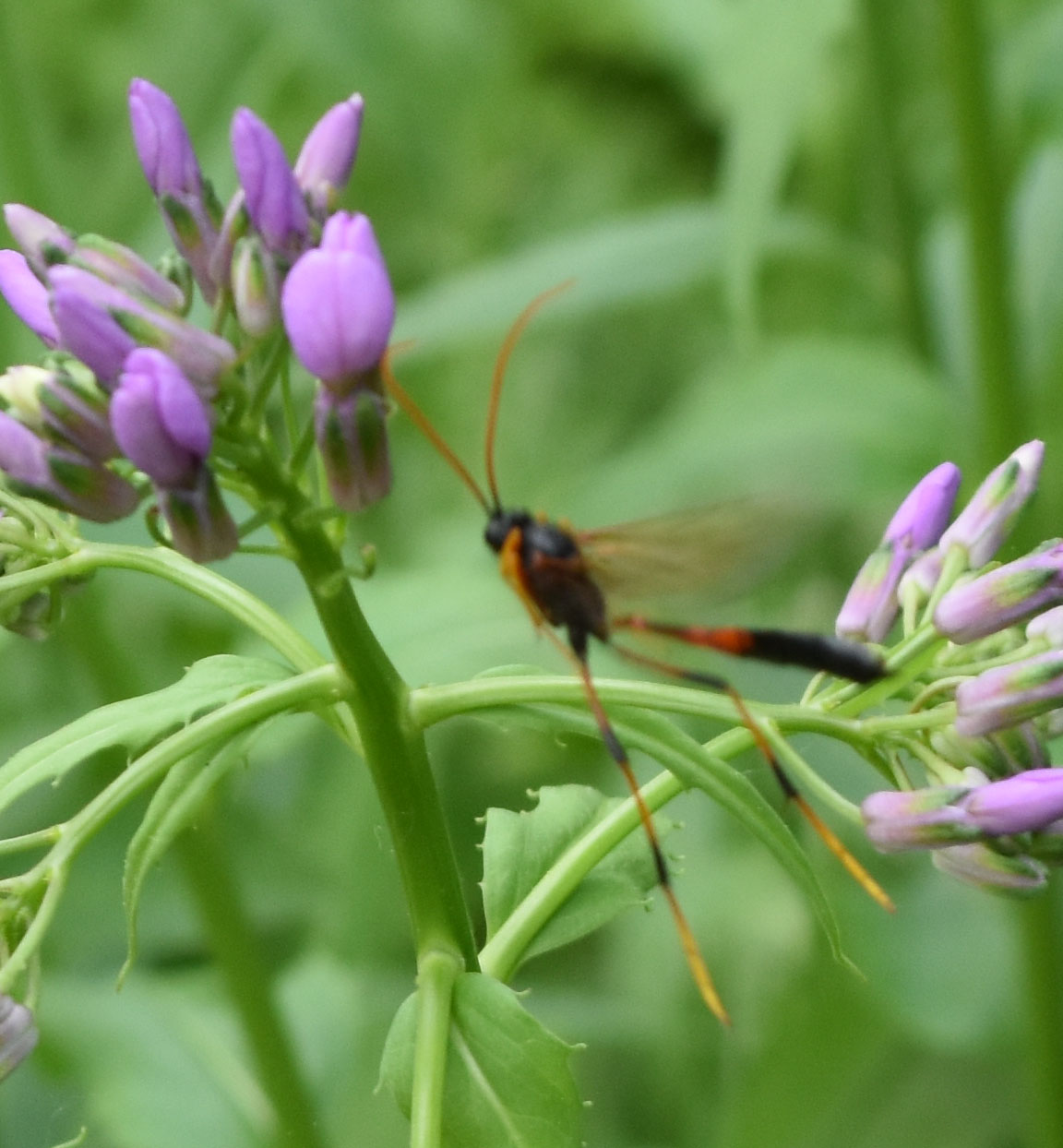
These guys fly so quickly that it’s hard to get them in focus. (OK I admit I’m also not a great photographer.)
This Wasp Has a Very Long Red Abdomen that Widens and is Flattened near the Black “Tail” End
That said, one of the BugGuide experts suggested mine is probably in the Subfamily Anomaloninae, and the genus Therion, and is probably a female.
There are photos of similar looking ones posted from Pennsylvania and Nova Scotia, among other places in North America.
What Does This Therion Wasp Eat?
Again, from BugGuide, this family usually preys on butterfly, moth and beetle larvae when it is a larva itself. The female probably lays eggs on or near caterpillars or beetle larvae which then are eaten by her offspring.
So this one I was watching was probably hunting for food for her future larvae.
One butterfly website I visited mentioned that while this may seem cruel to us it is actually a good thing or the numbers of caterpillars would strip bare many trees and plants.
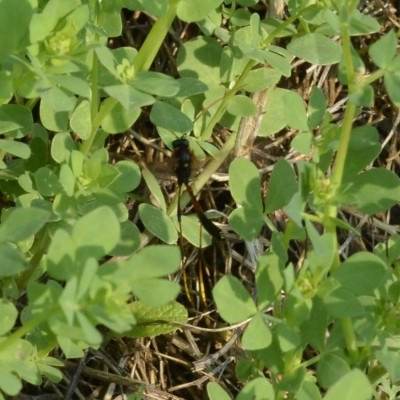
Despite their colouring, these wasps are tricky to spot while they hunt among the clover, vetch and trefoils. Can you spot this one? Do you notice how the tri-coloured dangling legs now look more like stems?
I think I may feel rather smug next spring if I see another of these insects. I wonder how I can casually mention to my friends what it is without it being obvious that I’m trying to brag?
Related Reading
Join In
Have you seen one of these brightly coloured wasps? Please share your sighting with a comment.

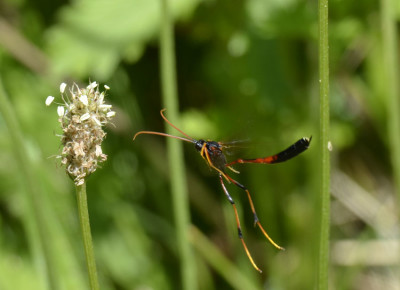
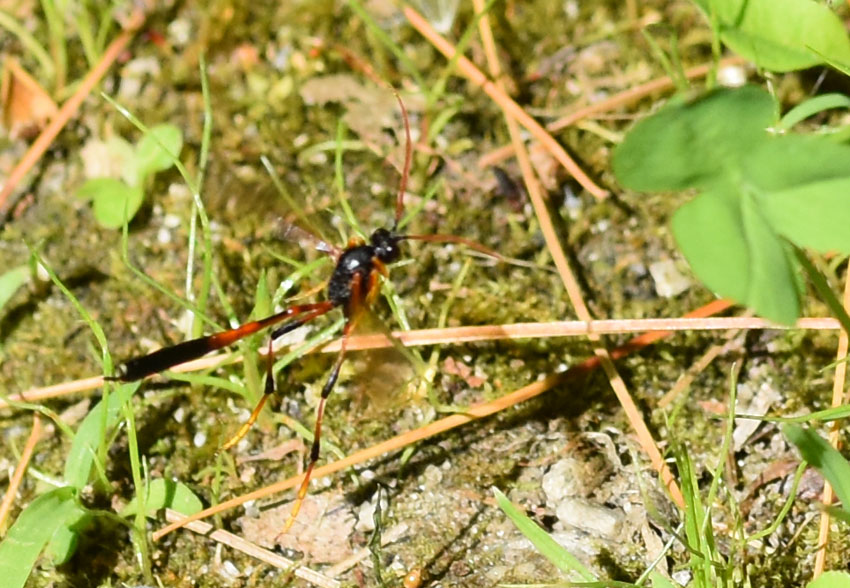
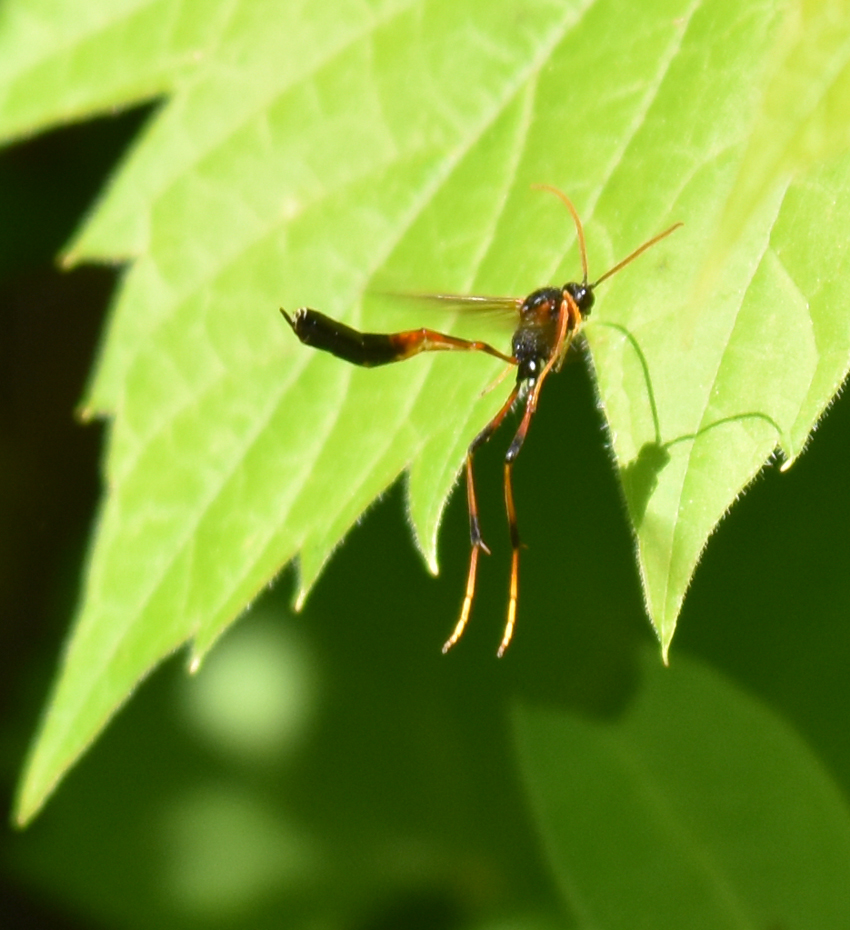
I’m glad you know what this ugly thing is! I moved mighty quickly…seems I angered a few wasps while mowing my front lawn today, in Victoria, BC.
HI. I’m in Saskatchewan.
I found a group of these wasps resting on an old elm tree stump.
One wasp was inflating a pale yellow sack on what appeared to be the tail. What it going on there? I have some fairly good photos.
I’ve read that is something to do with either drilling or laying the egg. You may want to post your photos to a free website called iNaturalist.org
The volunteers there may be able to confirm the id and provide more info.
I had one just like this visit my 9th floor balcony plants in Toronto today. First time I’d ever seen one; very hard to photograph.
They move quickly hunting for their prey–I had a lot of trouble getting a photo too!
I seen this exact wasp in my yard among clovers two years ago in Seattle. These pics are the only way I could identify it. Thank you.
They do move fast!
Do you know if they sting? I have quite a few in my yard.
I have never been stung by one and they are common here. Most creatures will bite in self defence but otherwise I doubt that a Therion would be a problem.
Took a short video of one of these guys today, in my garden in Ireland.
Interesting! It’s probably a different type than those here in Canada, unless they are circumpolar, which some insects are. Thanks for sharing!